In this article, we will learn about alder tree allergy (scientific name: Alnus) as well as how and when their pollen spreads.
| Alder tree (Genus: Alnus) | Pollen allergy profile |
|---|---|
| Pollen season | Winter and spring, depending on the species. |
| Pollination type | Pollen is primarily wind-transported. Each tree releases abundant pollen in the air. |
| Cross-reactivity with other pollen | Birch, Hazelnut, Hornbeam (trees of the Betulaceae family) |
| Pollen source | Green, thin, cylindrical male flowers (catkins) that turn yellow, green, and purple on maturation (see pictures below) |
| Gender | Monoecious: Each tree has both male and female flowers (catkins). |
| Fruit | The female catkins, when fertilized by pollen, become brown seed cones (see pictures below) |
How to identify an alder (Alnus) tree?
The best way to manage alder allergies is to learn about the tree and its pollen-producing habits.
Alder trees belong to the family Betulaceae and are related to their more popular cousin birch. I have allergies to the pollen of both trees and it is very likely that if you are sensitive to one, you are to the other as well. So much so, that some clinics test patients for sensitivity to only one of them but apply results to both genera of trees.
Alder or genus: Alnus, can be best identified by its small one-inch-long dark brown cone-like fruit called strobile, its two to four inches slender long green male flower (catkin), and its oval-shaped dark green leaves that have sawtooth edges.
Alder is a deciduous tree that loses its leaves during winter. It is a perennial and a mature tree always has both male and female flowers on its branches (see picture below).
Flowers (catkins)
Alder is a perennial tree and always has flowers (catkins) on its branches year-round.
The young male alder flower is a two to four inches long catkin that is slender shaped, hangs loose in clusters of 3 to 5, and is green in color. Its surface has small pyramid-shaped bumps giving it somewhat of an ornate look.
The mature male alder catkin that releases pollen is powdery yellow-green with purple pigmentation (see picture below).
For some species, the green male catkins first appear in summer and release pollen in winter. For others, the catkins appear in autumn and release pollen in spring.
The young female alder catkin is much shorter than the male catkin, about one-inch long, stout shaped, grows upright but at times hangs loose, and is green in color.
When the male pollen fertilizes the ovules in the female catkin, it starts to bear seeds and turns into fruit called strobile which is dark brown in color and looks like a small cone (see picture below).
All mature trees generally have a mix of young green female catkins and old dark brown strobile simultaneously.
Leaves
The alder (Alnus) leaves are oval-shaped with a pointy tip and are dark green on one side and lighter green on the other. Their edges are like fine or coarse sawteeth (serrated) and the leaves can grow to 7 inches long.
Bark and trunk
A single trunk rises from the roots for eight to ten feet before branching out. The bark is generally smooth gray or light brown in color.
What do alder (Alnus) trees look like?
Alder trees have pretty ordinary looks and that is why perhaps they are not popular as street trees or residential trees. They neither make great shade trees nor have ornamental qualities.
In the San Francisco Bay Area, my estimate is that the more picturesque birch trees outnumber alder trees 100 to 1.
But sure, when it comes to allergenicity, they match the birch tree pound for pound. A single alder tree can produce seven billion pollen grains in one season[R3].
For me, the leaves and the catkins remain the only traits with which I can recognize an alder tree with confidence. The rest of the tree is pretty unremarkable.
How would you describe the trees in the pictures below? Know this, the red and white labels are arbitrary and do not translate to the actual color of the trees or their parts.
How does alder pollen spread?
Alder releases its pollen in the air and wind can carry its pollen many miles.
Each male catkin is capable of producing five to 6 million pollen grains and each tree is capable of producing 7 billion pollen grains in one season.
There are only 2 alder trees in my immediate neighborhood and about 50 within a 5-mile radius. However, plenty of alder pollen shows up in our air surveys during winter and spring.
So, even a small number of trees are capable of creating a lot of nuisance for those who have alder tree allergies.
What does alder pollen look like?
Alder pollen is a fine yellow powder that the male flowers release into the air. The individual pollen grains, however, are invisible to the naked eye.
Alder pollen grain has a pentagonal shape and it has four of five protruding pores. Each pore has dark thickening around them. Alnus pollen: Stephanoporate (commonly tetra or pentaporate), aspidate and annulate.
To see the pollen of other plants and trees, visit our pollen library.
During which months do alder trees release pollen?
Alder releases pollen during winter and spring. Our air surveys in Burlingame, CA catch alder pollen from Nov-15th through January-15th and then again from March-15th through April-15th.
The white alder (Alnus rhombifolia) definitely releases pollen during winter. Some of the other species release pollen during spring.
The tree releases pollen only for 6 to 8 weeks in a year.
Each year the alder pollen season shifts a little bit depending on the weather conditions. However, you can train yourself to recognize when an alder tree is releasing pollen (read the section below).
However, if you live in the San Francisco Bay Area, you have an easier way out! I do regular tree inspections and air sampling in the area to provide reliable pollen updates on our website
How do you know if an alder tree is releasing pollen?
When the male flowers turn powdery yellow, it means the tree is releasing pollen. For many species, it happens before leaves appear in spring.
In contrast, when the alder male catkins are glossy green they are too young to be releasing pollen. When the catkins show some purple pigmentation and yellow powder on the surface, that is when they have matured enough to be releasing pollen.
If you have alder tree allergies, stay away from the tree if you see slender yellow catkins either on the tree branches or on the ground under the tree.
Also, it is best to follow your doctor’s medical advice for the prevention of any symptoms when you see green catkins start to turn yellow on an alder tree.
How do you distinguish between alder (Alnus) and birch (Betula)
It is true that the catkins and strobile of birch and alder are remarkably similar and pretty much indistinguishable for untrained eyes. However, there are three key differences between the two genera of trees.
- Birch trees’ barks are more ornamental than alders. For example, European white birch has silvery white bark and river birch has reddish brown flaky bark. In contrast, alders have plain grey or light brown bark.
- Alder tree has larger leaves, almost two to three times bigger than that of birch. Alder leaves can be 7 inches long, whereas birch tree leaves rarely go longer than 3 inches.
- The birch trees canopy has a droopy weeping look, whereas alder tree foliage is more upright.
I have created a detailed article with lots of pictures of birch trees as well. Enjoy!
Alder pollen allergy summary
Alder (Genus: Alnus) pollen is an important allergen in the US as well as Europe. It is from the same family Betulaceae as birch (Genus: Betula). It is common among allergy sufferers, as is for the author, to react to both pollen either because of direct allergies to each tree or allergy to one and cross-reactivity to the other.
Alder pollinates in winter, whereas birch pollinates in spring. This sequential blooming, unfortunately, prolongs the misery of many allergy sufferers.
If you are allergic to alder, do not forget to read about its partner in crime the birch tree and its pollen.
Sources
References
- Allergy Plants by Mary Jelks, M.D.
- Plant identification terminology by James G. Harris and Melinda Woolf Harris (Second Edition)
- Sampling and indentifying pollens and Molds by E. Grant Smith
All pictures, unless otherwise credited to another source, are taken by the author and are copyrighted material. The pollen picture is taken in our aerobiology lab using an Olympus compound microscope.



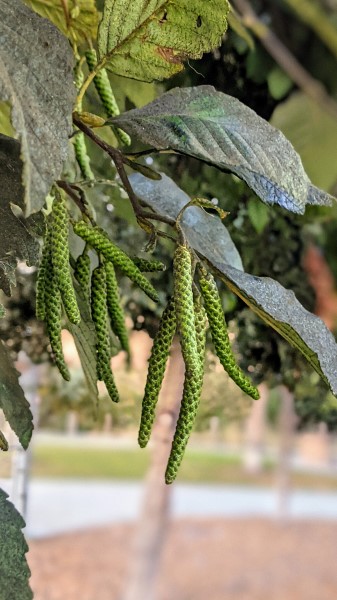
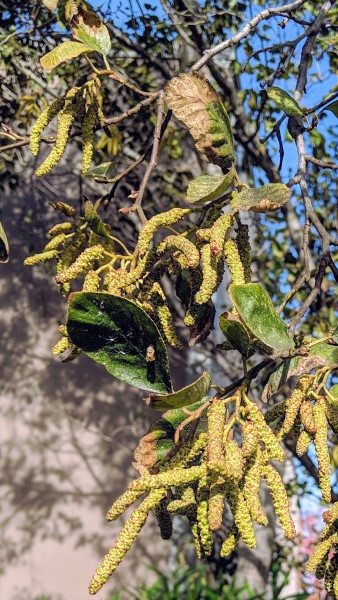



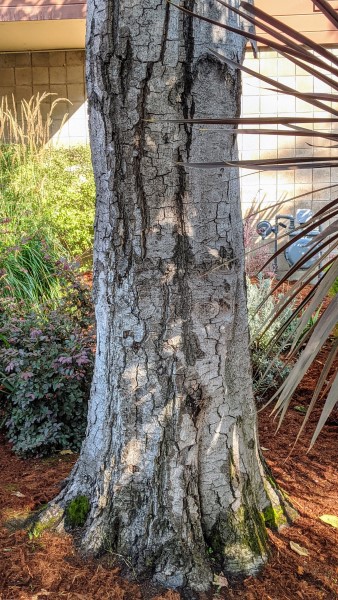
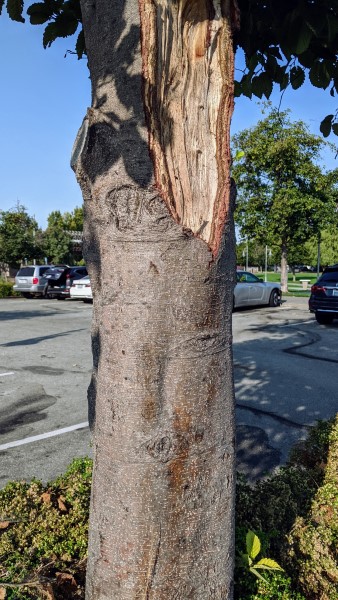
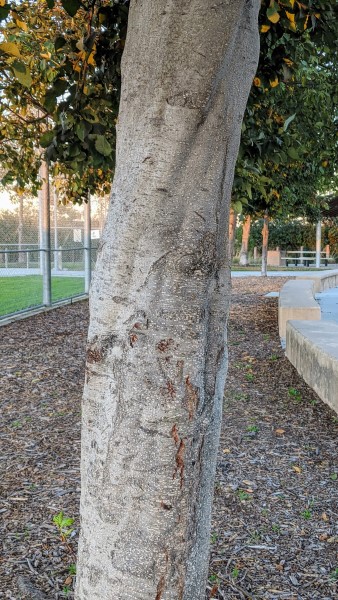
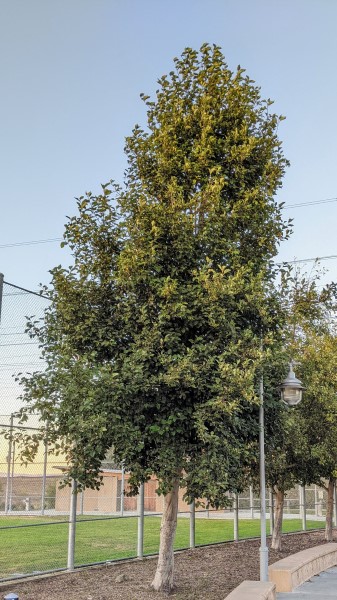
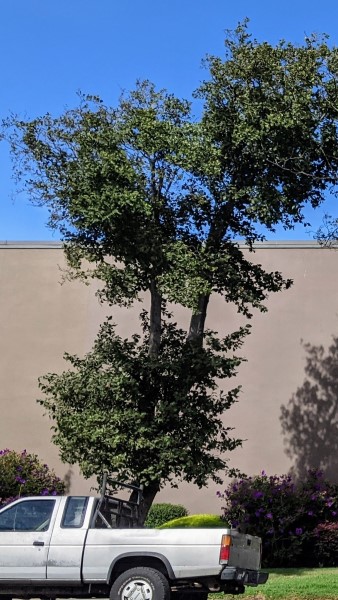
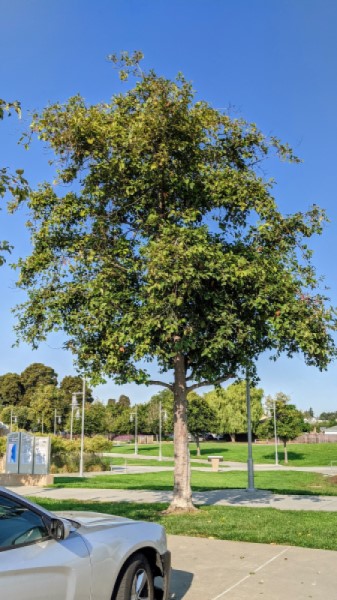
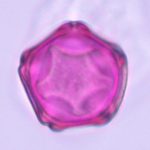

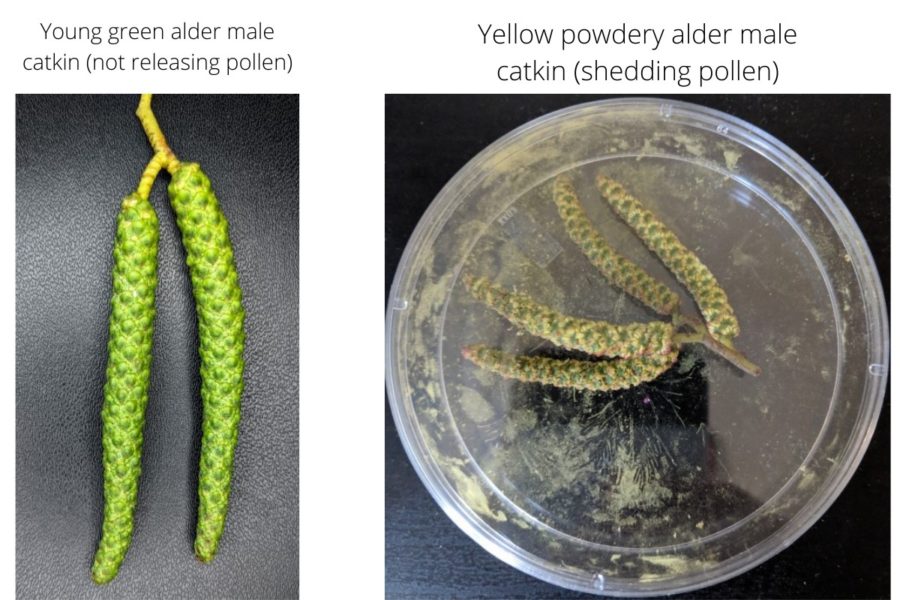

My husband suffers very bad hay fever and other lung problems. We have an Alder tree that has large overhanging branches from our neighbour’s property, into our property which we would like to trim back, hoping that this will reduce his hay fever. I would appreciate further information on the Alder Tree and its detrimental health effects for Hay fever sufferers and people with lung problems because we will need permission to trim these Alder Tree branches. I will be approaching the Community Justice Centre to mediate in regards to trimming of the tree at our expense.